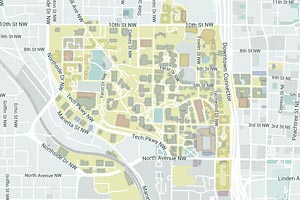Understanding the locomotion of animals and robots can be a challenging problem, involving nonlinear dynamics and the coordination of many degrees of freedom. Geometric mechanics offers a vocabulary for discussing these dynamics in terms of lengths, areas, and curvatures. In particular, a tool called the *Lie bracket* combines these geometric concepts to describe the effects of cyclic changes in the locomotor's shape, such as the gaits used by walking or crawling systems.
In this talk, I will introduce some basic principles of geometric mechanics, and show how they provide insight into the locomotion of undulating systems (such as snakes and micro-organisms). I will then discuss my work on how coordinate representations affect the information provided by the geometric structures, and show that the choice of coordinates for a given system can be optimized in a simple, fundamental manner. Finally, I will demonstrate that the geometric techniques are useful beyond the "clean" ideal systems on which they have traditionally been developed, and can provide insight into the motion of systems with considerably more complex dynamics, such as locomotors in granular media.
Bio:
Ross L. Hatton is an Assistant Professor of Mechanical Engineering at Oregon State University. He received PhD and MS degrees in Mechanical Engineering from Carnegie Mellon University, following an SB in the same from Massachusetts Institute of Technology. His research focuses on understanding the fundamental mechanics of locomotion and on finding abstractions that facilitate human control of unconventional locomotors.
Event Details
Date/Time:
-
Date:Wednesday, March 6, 2013 - 10:00am
Location:
Klaus 1116 East


